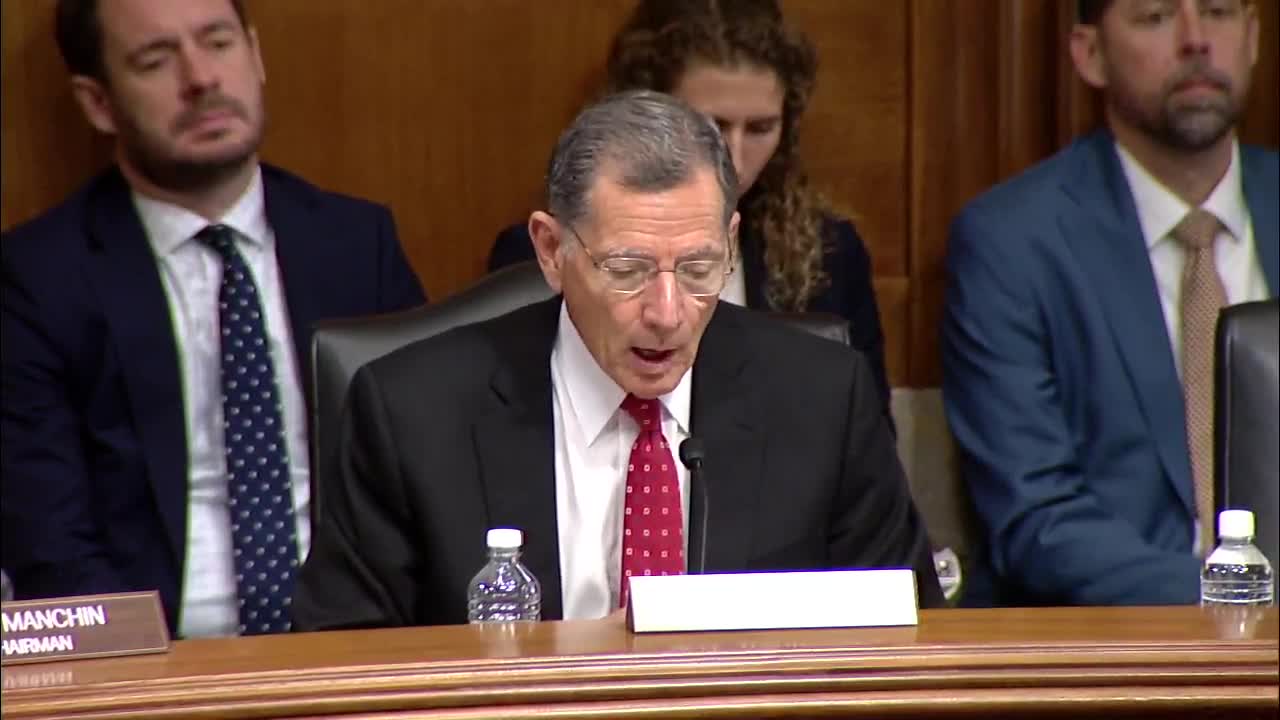Fusion Energy Revolution Sparks Race for Global Leadership
September 19, 2024 | Energy and Natural Resources: Senate Committee, Standing Committees - House & Senate, Congressional Hearings Compilation
This article was created by AI summarizing key points discussed. AI makes mistakes, so for full details and context, please refer to the video of the full meeting. Please report any errors so we can fix them. Report an error »

In a recent government meeting focused on the future of fusion energy, key officials and industry leaders outlined ambitious plans to position the United States as a global leader in this transformative technology. The discussions highlighted the critical need for innovation, public-private partnerships, and robust manufacturing networks to overcome existing scientific and technological challenges.
Dr. John Paul Yulan, Associate Director for Fusion Energy Sciences at the Department of Energy, emphasized the importance of fusion energy as a national security imperative. He noted that harnessing fusion reactions could provide a resilient, carbon-free energy source essential for combating climate change. Yulan outlined a three-pronged strategy to accelerate the development of fusion energy: closing critical science and technology gaps, leveraging public-private partnerships, and building a strong manufacturing network for fusion technologies.
Yulan also announced the upcoming release of the first-ever U.S. fusion science and technology roadmap, which will detail the necessary steps and metrics for progress in the field. He underscored the urgency of this initiative, stating that the U.S. must act decisively to maintain its technological leadership amid growing competition from countries like China.
Miss Jackie Siebenz, Director of Public Affairs at Helion Energy, shared insights from her company’s advancements in fusion technology. Helion is currently developing its seventh prototype, Polaris, which aims to be the first to demonstrate electricity production from fusion. Siebenz highlighted the importance of deploying multiple fusion power plants to meet future energy demands and called for strategic efforts to build resilient supply chains and establish new regulatory pathways.
The meeting underscored a pivotal moment in the pursuit of commercial fusion energy, with participants expressing a collective commitment to innovation and collaboration. As the U.S. seeks to harness the potential of fusion energy, the discussions reflected a clear recognition of the challenges ahead and the need for significant investment and coordinated efforts across sectors.
Dr. John Paul Yulan, Associate Director for Fusion Energy Sciences at the Department of Energy, emphasized the importance of fusion energy as a national security imperative. He noted that harnessing fusion reactions could provide a resilient, carbon-free energy source essential for combating climate change. Yulan outlined a three-pronged strategy to accelerate the development of fusion energy: closing critical science and technology gaps, leveraging public-private partnerships, and building a strong manufacturing network for fusion technologies.
Yulan also announced the upcoming release of the first-ever U.S. fusion science and technology roadmap, which will detail the necessary steps and metrics for progress in the field. He underscored the urgency of this initiative, stating that the U.S. must act decisively to maintain its technological leadership amid growing competition from countries like China.
Miss Jackie Siebenz, Director of Public Affairs at Helion Energy, shared insights from her company’s advancements in fusion technology. Helion is currently developing its seventh prototype, Polaris, which aims to be the first to demonstrate electricity production from fusion. Siebenz highlighted the importance of deploying multiple fusion power plants to meet future energy demands and called for strategic efforts to build resilient supply chains and establish new regulatory pathways.
The meeting underscored a pivotal moment in the pursuit of commercial fusion energy, with participants expressing a collective commitment to innovation and collaboration. As the U.S. seeks to harness the potential of fusion energy, the discussions reflected a clear recognition of the challenges ahead and the need for significant investment and coordinated efforts across sectors.
View full meeting
This article is based on a recent meeting—watch the full video and explore the complete transcript for deeper insights into the discussion.
View full meeting